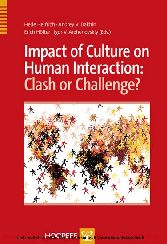Search and Find
Service
Shortcomings of both approaches (p. 194-195)
Critique of the etic approach
The etic approach faces two major problems. First, it is difficult to define constructs that have universal validity. "Validity" in this sense not only refers to an equivalent definition of the construct under study, but also to its relative significance within a specific culture. As the constructs imposed by the etic approach are usually rooted in the researcher’s own culture, there is the danger that aspects that are insignificant in his/her own culture but significant in another one are neglected. This may be illustrated by Hofstede’s research. Originally, Hofstede’s analysis yielded only four dimensions (Hofstede, 1980). The fifth dimension (short-term vs. long-term orientation) was later introduced by extending the questionnaires derived from an emic perspective by Bond (cf. Hofstede &, Bond, 1988).
The second problem of the etic approach is associated with the fact that constructs cannot directly be measured but are only measurable in the form of indicators such as verbal reports or observable behaviors. The relationship between the indicators of underlying constructs and the constructs themselves needs theoretical explanation. This relationship mostly varies in culture-specific ways. Thus, for instance, the behaviors indicating individualism, power distance and uncertainty avoidance may be different across cultures (D’Iribarne, 1996/97, cf. Andralojc, 2004) and may refer to different situational contexts across cultures (cf. Spering, 2001). Often the questions (e.g. the question containing the term "breaking a rule" as indicating uncertainty avoidance) do not take into account this meaning and situation specificity and, therefore, may be of limited use in predicting cultural differences in behavior. Situational demands as mediating factors are of special significance in times of growing societal dynamics and cultural change. The acceptability of culture-related practices may significantly change when people take on task requirements that they are not familiar with. Differences specific to these new situations might in fact account for research results that were previously traced back to culture specifics (Conway, Schaller, Tweed, &, Hallett, 2001). D’Iribarne claims that an ethnographic approach, even if it involves much smaller samples, leads to a more certain and precise understanding of constructs and their indicators in a changing society than does Hofstede’s approach using large numbers of examples.
Critique of the emic approach
From the emic perspective, conducting research needs self-reports and self-explanations of the individuals under study who must verbally communicate the nature of their individual experience to the researcher. The problem of using self-reports as a data source is that individuals may systematically misrepresent or misinterpret their own behavior (cf. Helfrich, 1999). Often the explanations given by individuals tend to be guided more by behavior norms and stereotypes than by behavior itself. In other words, self-reports tend to be biased by the social and personal desirability of actions. Empirical studies show that actual behavior may deviate considerably from the standards inferred from self-reports (see e.g., Helfrich, 1996). While there may in some cases be conscious dissimulation designed to create a favorable impression ("impression management"), there may mostly be "self-deception", i.e. positively biased reports that the respondent actually believes to be true (cf. Paulhus, 1986, p. 144).
All prices incl. VAT













